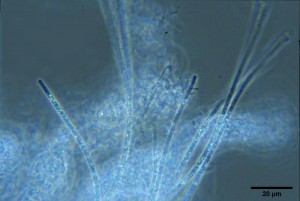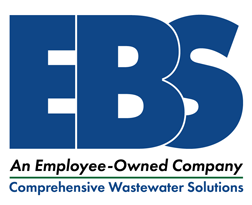Concern or Curiosity?
Part 2 – Thiothrix and Type 021N
Mike Foster, Principal Consultant – Environmental Business Specialists, LLC
Paul Klopping, Principal Consultant – Callan & Brooks
 In part one of this series, we discussed the differences between activated sludge and aerated stabilization basins (ASBs) with regard to filamentous bacteria and filamentous bulking. We also talked about one of the most common filaments found in ASBs, Haliscomenobacter hydrossis. In this article, we will discuss three other filament species found in aerated stabilization basins – Type 021N, Thiothrix, Beggiatoa.
In part one of this series, we discussed the differences between activated sludge and aerated stabilization basins (ASBs) with regard to filamentous bacteria and filamentous bulking. We also talked about one of the most common filaments found in ASBs, Haliscomenobacter hydrossis. In this article, we will discuss three other filament species found in aerated stabilization basins – Type 021N, Thiothrix, Beggiatoa.
These three filaments all share a common metabolic trait – mixotrophy. These organisms can grow on a number of organic compounds heterotrophically, but also may gain energy for growth from the simultaneous oxidation of inorganic, reduced sulfur compounds (e. g. H2S). Thus the presence of reduced sulfur compounds in wastes being treated may give these filamentous organisms a growth advantage over other strictly heterotrophic organisms (i.e. floc formers). It should be noted that actual energy capture from sulfur oxidation has not been vigorously proven, as yet, and that true autotrophy does not occur, as organic carbon compounds are always required for growth.
While we frequently see common or abundant levels of this filament in aeration basin samples, it rarely makes up a larger portion of the effluent total suspended solids. It is, however, a useful indicator of system health relative to loading and dissolved oxygen and its appearance can be a useful tool is heading off problems before they become crises.
